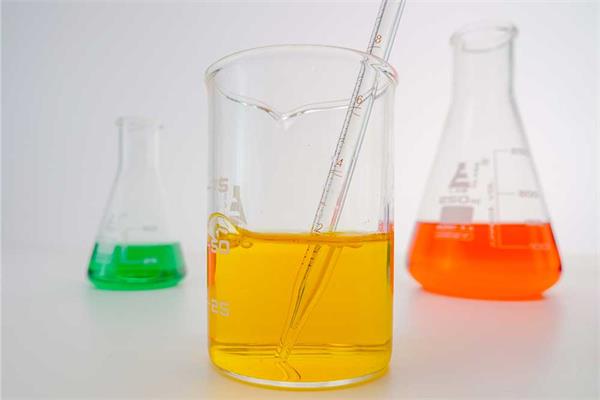
The Candidate List of substances of very high concern now contains 219 chemicals that may harm people or the environment.
Eight substances used in consumer products such as cosmetics, scented articles, rubber and textiles, and in solvents, flame retardants or to manufacture plastics products, have been added to the
Candidate List of substances of very high concern for Authorisation, published by ECHA in accordance with Article 59(10) of the REACH Regulation.
The European Chemicals Agency (ECHA) is an Agency of the European Union implementing EU chemical regulations for a safe use of chemicals that improves the protection of human health and the environment.
These eight substances have been added to the Candidate List (which has now 219 entries) because they are hazardous to human health as they are toxic for reproduction, carcinogenic, respiratory sensitisers or endocrine disruptors. These substances may be placed on the Authorisation List in the future, which means that companies would need to apply for permission to continue using them.
Companies using these substances must follow their legal obligations and ensure the safe use of these chemicals. They also have to notify ECHA under the Waste Framework Directive if their products contain substances of very high concern. This notification is submitted to ECHA’s SCIP database and the information will later be published on the Agency’s website.
Importers and producers of articles containing a Candidate List substance have six months from the date of its inclusion in the list (8 July 2021) to notify ECHA. Any supplier of articles containing a Candidate List substance above a concentration of 0.1 % weight has to give a safety data sheet with sufficient information to their customers and consumers to allow safe use.
The substances added to the Candidate List on 8 July 2021
Substance name
|
EC number
|
CAS number
|
Reason for inclusion
|
Examples of use(s)
|
2-(4-tert-butylbenzyl)propionaldehyde and its individual stereoisomers
|
-
|
-
|
Toxic for reproduction (Article 57c)
|
Cleaning agents, cosmetics, in scented articles, polishes and wax blends.
|
Orthoboric acid, sodium salt
|
237-560-2
|
13840-56-7
|
Toxic for reproduction (Article 57c)
|
Not registered under REACH.
May be used as solvent and corrosion inhibitor.
|
2,2-bis(bromomethyl)propane1,3-diol (BMP);
2,2-dimethylpropan-1-ol, tribromo derivative/3-bromo-2,2-bis(bromomethyl)-1-propanol (TBNPA);
2,3-dibromo-1-propanol (2,3-DBPA)
|
221-967-7,
253-057-0,
202-480-9
|
3296-90-0,
36483-57-5,
1522-92-5,
96-13-9
|
Carcinogenic (Article 57a)
|
BMP: manufacture of polymer resins and in one component foam (OCPF) application.
TBNPA: polymer production manufacture of plastics products, including
compounding and conversion and as an intermediate.
DBPA: registered as an intermediate.
|
Glutaral
|
203-856-5
|
111-30-8
|
Respiratory sensitising properties (Article 57(f) - human health)
|
Biocides, leather tanning, x-ray film processing, cosmetics.
|
Medium-chain chlorinated paraffins (MCCP)
(UVCB substances consisting of more than or equal to 80% linear chloroalkanes with carbon chain lengths within the range from C14 to C17)
|
-
|
-
|
PBT (Article 57d)
vPvB (Article 57e)
|
Flame retardants, plasticising additives in plastics, sealants, rubber and textiles.
|
Phenol, alkylation products (mainly in para position) with C12-rich branched alkyl chains from oligomerisation, covering any individual isomers and/ or combinations thereof (PDDP)
|
-
|
-
|
Toxic for reproduction (Article 57c)
Endocrine disrupting properties (Article 57(f) - human health and environment)
|
Preparation of lubricant additive materials and of fuel system cleaners.
|
1,4-dioxane
|
204-661-8
|
123-91-1
|
Carcinogenic (Article 57a)
Equivalent level of concern having probable serious effects to the environment (Article 57(f) -environment)
Equivalent level of concern having probable serious effects to human health (Article 57(f) –human health)
|
Solvent.
|
4,4'-(1-methylpropylidene)bisphenol
|
201-025-1
|
77-40-7
|
Endocrine disrupting properties (Article 57(f) - human health and environment)
|
Not registered under REACH.
May be used in manufacture of phenolic and polycarbonate resin.
|
Note: due to a technical error, the EC entry 251-823-9, EC name: tetrahydro-4-methylphthalic anhydride was mistakenly associated to an earlier Candidate List entry Hexahydromethylphthalic anhydride [including cis- and trans- stereo isomeric forms and all possible combinations of the isomers]. The associated substance tetrahydro-4-methylphthalic anhydride has now been removed from the Candidate List. The substance infocard and brief profile are being updated accordingly. We apologize for any inconvenience this may have caused.